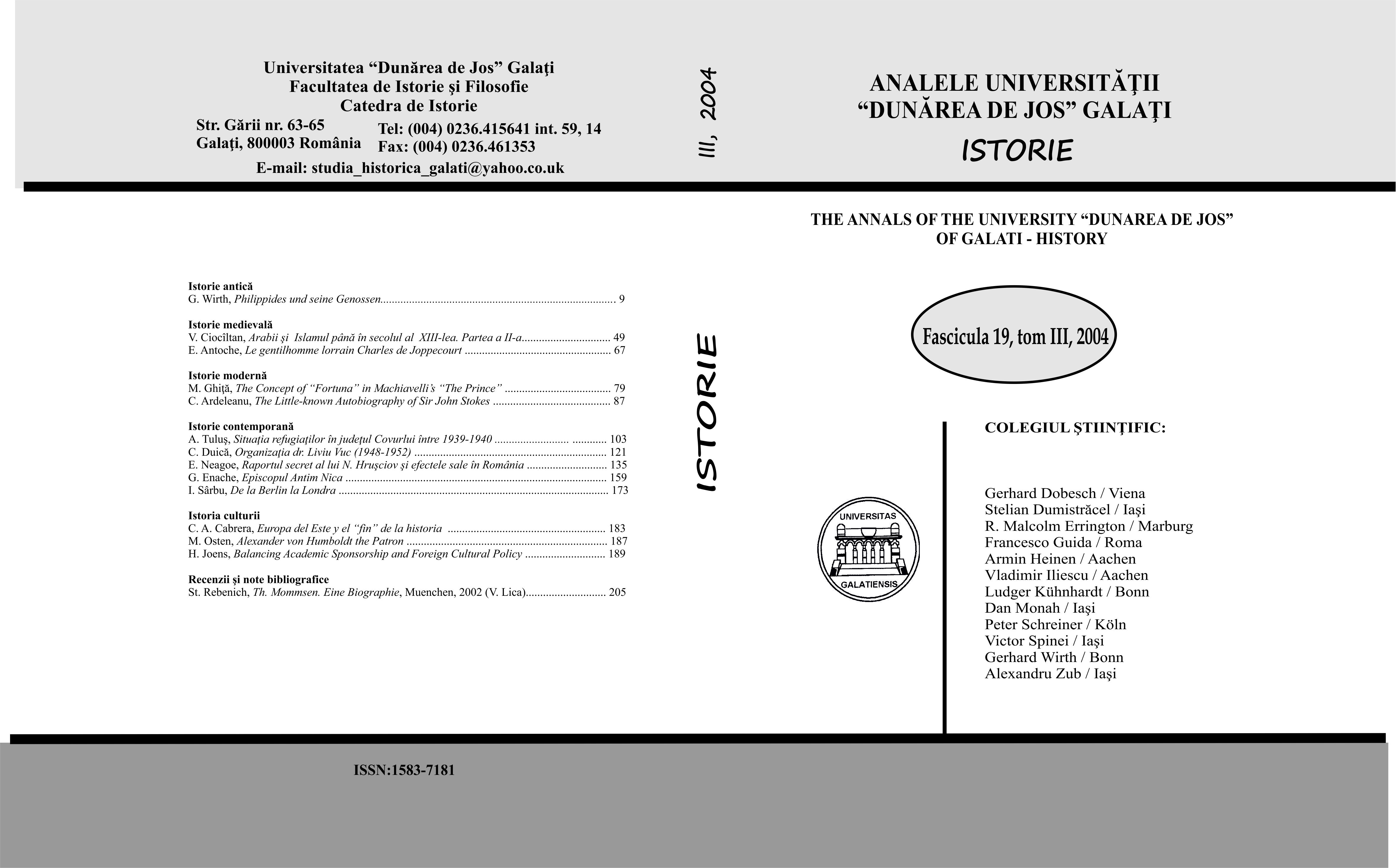The Image of the Stranger in the Writings of Plato, Saadi, Ibn Bajja, Suhrawardi
The Image of the Stranger in the Writings of Plato, Saadi, Ibn Bajja, Suhrawardi
Author(s): Silviu LupaşcuSubject(s): History, Philosophy, Literary Texts, Theology and Religion
Published by: Galaţi University Press
Keywords: image; stranger; Plato; Saadi; Ibn Bajja; Suhrawardi;
Summary/Abstract: This essay epitomizes the history of an idea: the stranger. The almost inexhaustible meanings of the word allowed the author to trace a fascinating trajectory of this notion within the history of culture and the history of ideas. The archaic significance defines the stranger in the political and legal context of the Greek polis, a status which is described by Plato in The Laws. The system of thought of the Hellenistic Gnosticism incorporates the image of the stranger as a symbol revealing the traumas and beatitudes of the human soul on the way towards redemption. In this respect, The Hymn of the Pearl stands as a masterpiece of the Gnostic literature. Furthermore, the symbol of the stranger was borrowed into the spiritual realm of philosophical and mystical Islam, in the Middle Ages. Towering figures of Sufi wisdom, such as Ibn Bajja, Saadi and Suhrawardi, used the image of the stranger in order to create priceless literary and religious brilliance.
Journal: Analele Universităţii Dunărea de Jos din Galaţi. Seria Istorie
- Issue Year: 2004
- Issue No: 03
- Page Range: 181-187
- Page Count: 7
- Language: English

